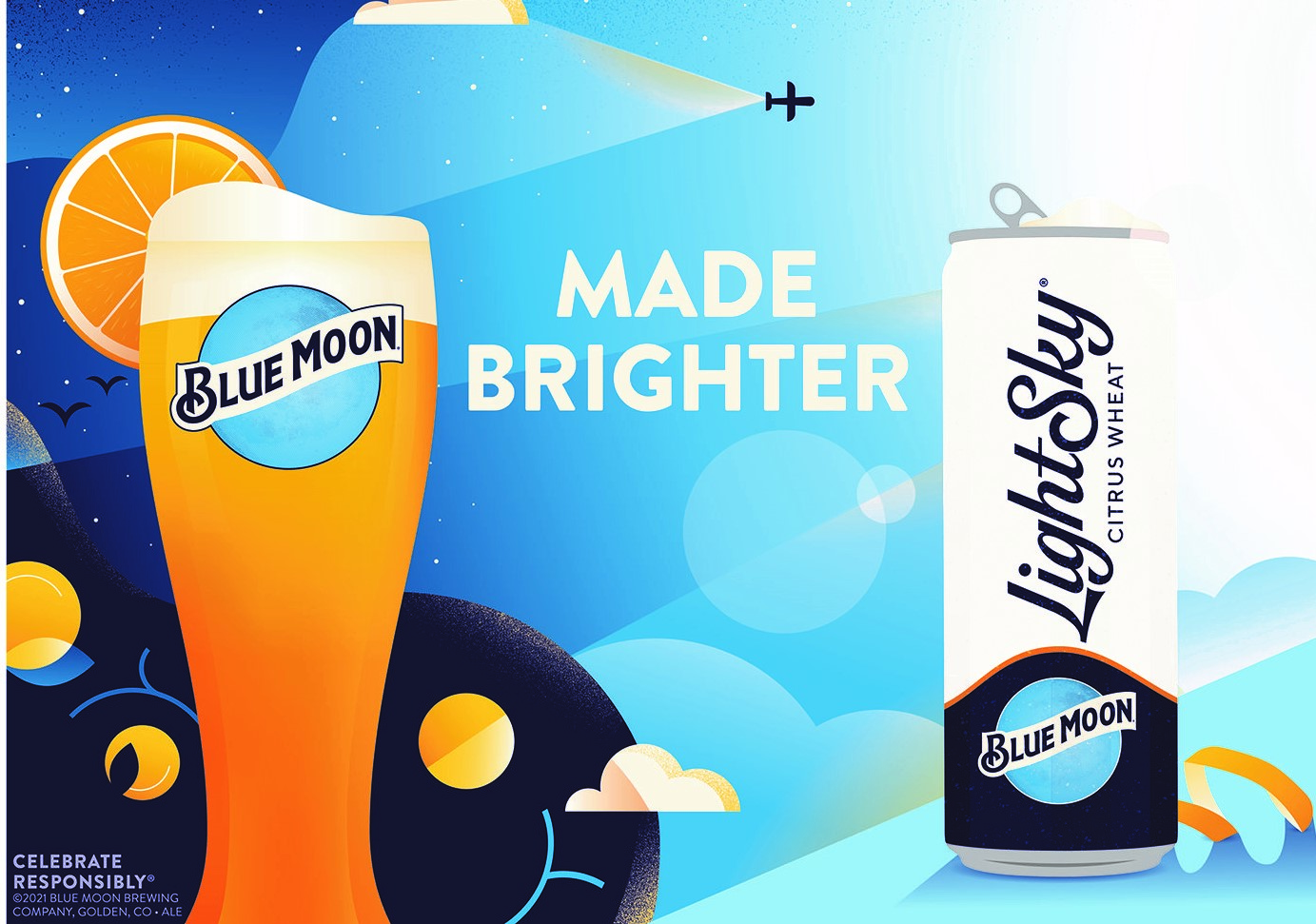Editor's note: An earlier version of this story and its headline cited incorrect data.
Few brands in the Molson Coors portfolio thrive in bars and restaurants as much as Blue Moon Belgian White.
With its signature glassware and orange wheel, drinkers see Blue Moon as part of an experience they can’t get at home – and that experience was largely unavailable as the pandemic shuttered the on-premise across much of the U.S.
But now, with bars and restaurants back in business, the nation’s top craft brand, which derives about half of its sales volume from the on-premise, is getting a boost.
The Blue Moon franchise, led by flagship Belgian White and fast-growing Blue Moon LightSky, is up this year, fueled by strength in the on-premise. On top of that, Blue Moon LightSky is up by more than 16% for the year overall, according to Molson Coors data for the week ending July 25.
“We are feeling really optimistic about the brand, especially as the on-premise has started to recover,” says Rachel Boykins, marketing manager for Blue Moon. “It’s returned to more than 80% of the tap handles it had in 2019; we feel like we had the distribution ready when consumers went back to bars.”
The data bear that out, with Blue Moon ranking as the only top national craft brand to grow its customer base this year, according to a Molson Coors analysis of recent IRI data.
“Belgian White and LightSky are a one-two punch,” says Jackie Crouch, category insights executive for Molson Coors Beverage Company.
LightSky, a light citrus wheat ale that ranked as the top new beer innovation in 2020, is proving it has staying power. The brand is the top share-gainer in the craft segment in both dollar sales and volume in 2021, according to IRI data through May. Even better, it has been incremental to the Blue Moon franchise, sourcing drinkers from outside the beer category.
While some Belgian White loyalists are buying LightSky, the beer is mostly attracting a different consumer, IRI data show. Belgian White drinkers tend to be affluent, but skew older. LightSky drinkers, meanwhile, are also affluent, but younger Gen Xers and older Millennials. It’s also bringing in what Boykins calls “lapsed Blue Moon drinkers,” who are looking for options with fewer calories and carbs.
“LightSky helps bring those lapsed drinkers back with a lower-calorie alternative,” she says.
Crouch says LightSky is also attracting hard seltzer drinkers, who want a beverage that is lighter and easier to drink. What’s more, LightSky sees more sales when positioned alongside hard seltzers in advertisements, she says.
“Having that slim can, a lighter profile and ‘light’ in the name, LightSky fits what the consumer is looking for,” she says. “You want to put ads out there that attract unique consumers, so you are not cannibalizing your product.”
That’s not been a risk for Blue Moon, Crouch says: Only 3% of LightSky volume comes from other Blue Moon brands, and when the brands are paired together in ads, they see a sales boost of 18% versus standalone ads, according to Molson Coors' analysis of IRI data.
While the return to the on-premise and LightSky’s continued success have provided Blue Moon with momentum this year, the brand isn’t sitting on its haunches.
“Blue Moon is going to continue to innovate, while putting a special focus on the on-premise. We’re going to continue to drive the brand forward,” Boykins says.

